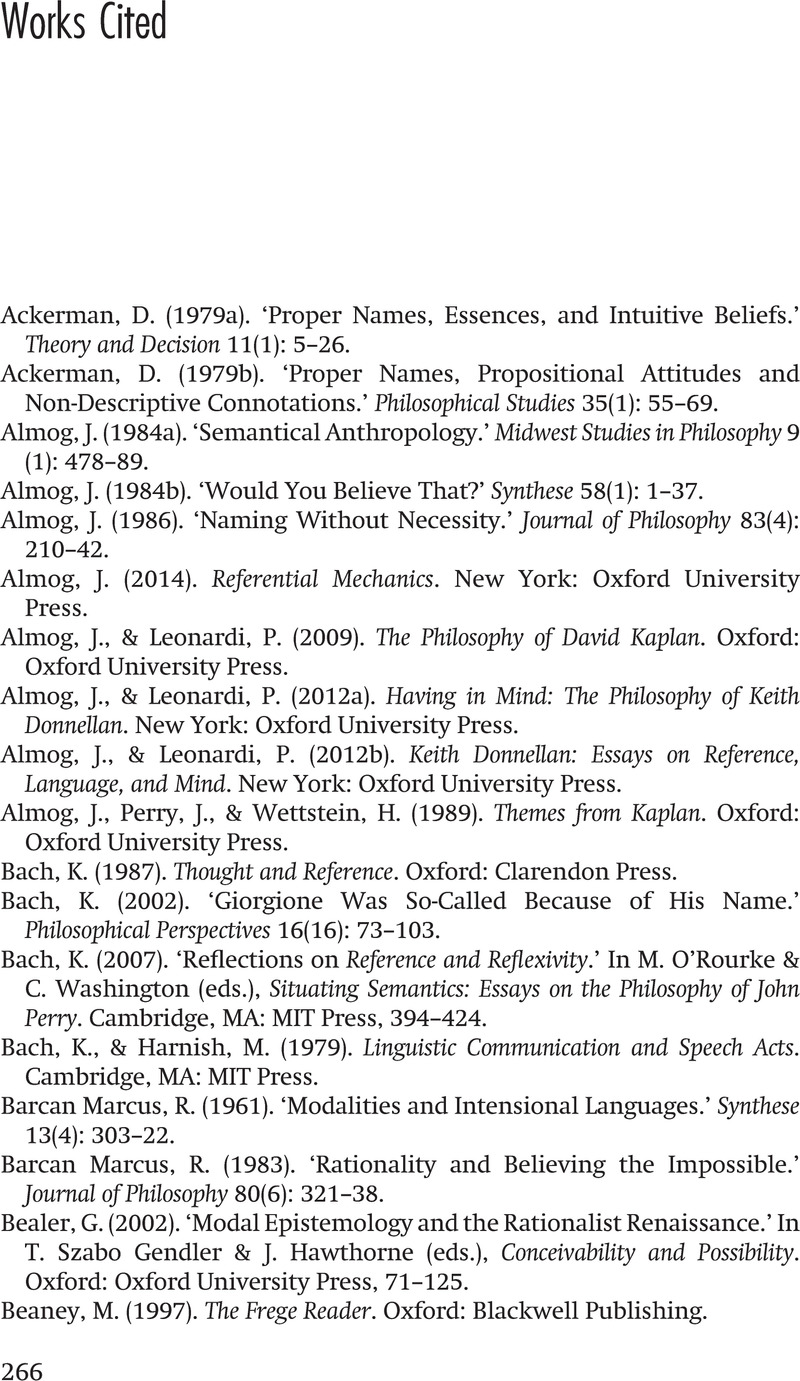Book contents
- Naming and Indexicality
- Key Topics in Semantics and Pragmatics
- Naming and Indexicality
- Copyright page
- Dedication
- Contents
- Acknowledgements
- Introduction
- 1 Descriptivism
- 2 The Referentialist Revolution
- 3 Three Puzzles Arising from the Rigidity Thesis
- 4 Varieties of Descriptivist Responses
- 5 Two-Dimensionalism
- Conclusion
- Glossary
- Works Cited
- Index
- References
Works Cited
Published online by Cambridge University Press: 02 December 2021
- Naming and Indexicality
- Key Topics in Semantics and Pragmatics
- Naming and Indexicality
- Copyright page
- Dedication
- Contents
- Acknowledgements
- Introduction
- 1 Descriptivism
- 2 The Referentialist Revolution
- 3 Three Puzzles Arising from the Rigidity Thesis
- 4 Varieties of Descriptivist Responses
- 5 Two-Dimensionalism
- Conclusion
- Glossary
- Works Cited
- Index
- References
Summary

- Type
- Chapter
- Information
- Naming and Indexicality , pp. 266 - 281Publisher: Cambridge University PressPrint publication year: 2021

